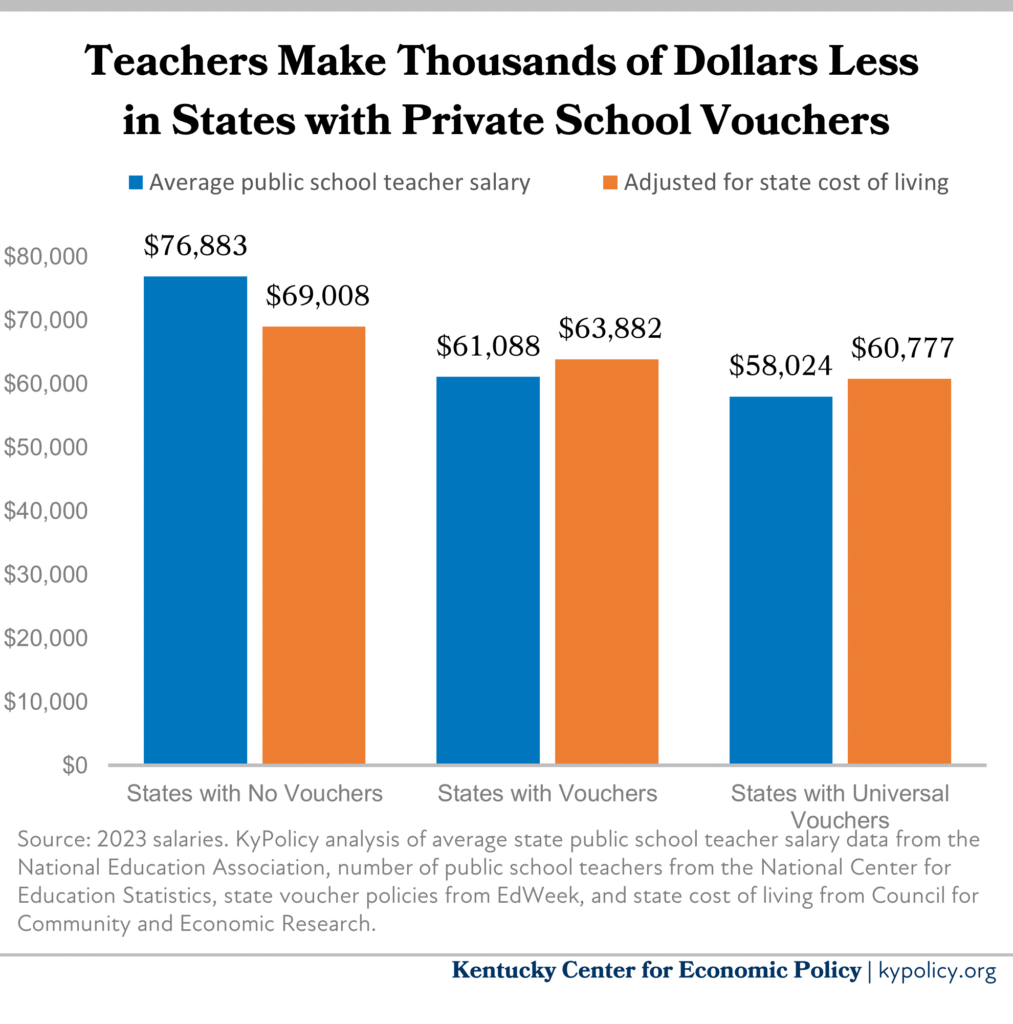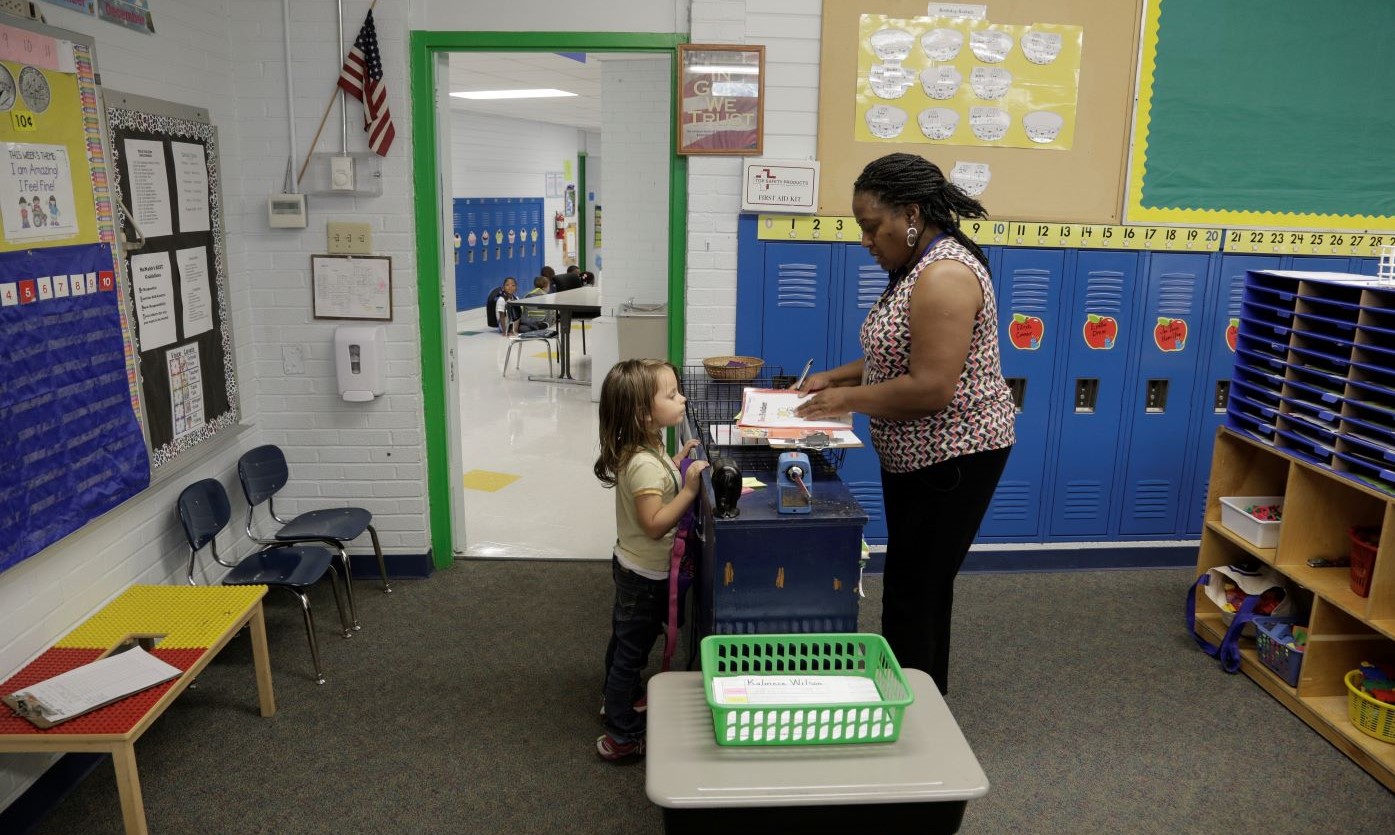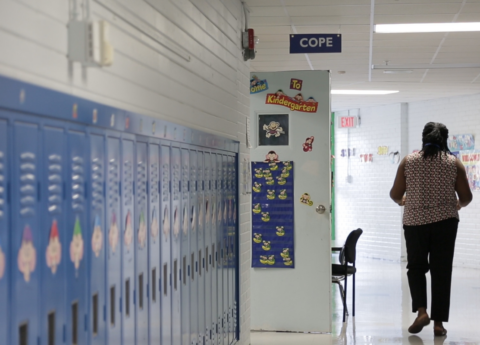If Amendment 2 passes on the ballot this November, it will allow politicians to divert public dollars to private schools. Recent experience in similar states shows that private school voucher programs are likely to cost hundreds of millions of dollars or even up to $1.19 billion annually in Kentucky.
Yet proponents are making the false and absurd claim that the amendment will somehow increase public school funding and even teacher pay. A simple look at the data tells the opposite story. States with substantial voucher programs in 2007 spent $900 less per-pupil on public education than states without vouchers, and $2,800 less by 2021.
With less spending on public education, public school teachers are paid much less in voucher states. In 2023, average public school teacher pay was $15,795 less in states with some kind of private school voucher program than in states without them. And average public school teacher pay was $18,859 less in states that offered universal or near-universal voucher programs available to households regardless of income. Even after taking into account variations in cost of living, the average public school teacher makes $5,126 less in states with vouchers and $8,231 less in states with universal vouchers.1

Kentucky already has a severe teacher shortage fueled in part by inadequate pay. Erosion of state investment in public education has resulted in average pay that is now 14% less than in 2008 after adjusting for inflation, and as much as 33% less in rural counties. Kentucky ranks 41st among states in teacher pay, and the state’s teachers have substantially lower salaries than workers in comparable Kentucky jobs.
Also, vouchers will mean fewer teachers in public schools and more in private schools, where pay tends to be even lower. Nationally, the average private school teacher makes 25% less than the average public school teacher. Young Kentuckians going into the teaching profession will be more likely to enter lower-paying jobs.
Passing Amendment 2 will result in dollars diverted from public schools, inevitably hurting teacher pay. And it will weaken our public schools, where 90% of Kentucky students attend, to the detriment of kids and communities.
- Average state public school teacher salary data from https://www.nea.org/resource-library/educator-pay-and-student-spending-how-does-your-state-rank/teacher. Number of public school teachers in each state from https://nces.ed.gov/ccd/tables/202223_summary_2.asp. State voucher policies from https://www.edweek.org/policy-politics/which-states-have-private-school-choice/2024/01. Cost of living index from the Council for Community and Economic Research, https://meric.mo.gov/data/cost-living-data-series.




